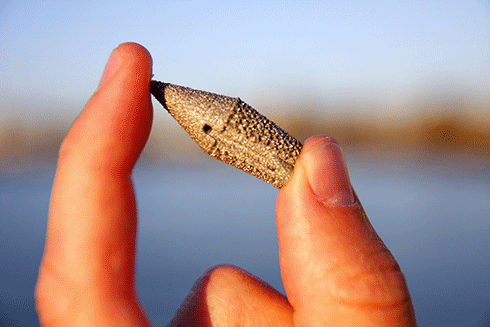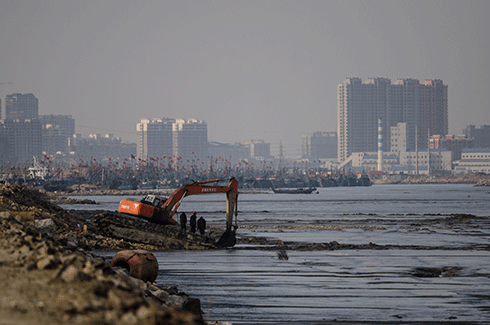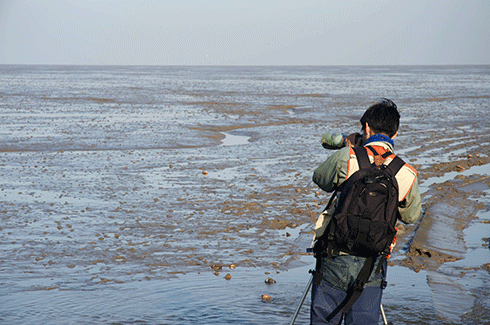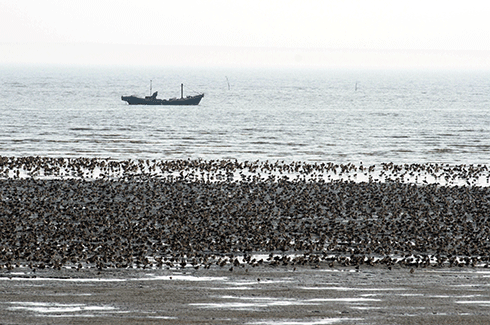
|
Published: 2 December 2013
How green is 3D printing?
3D printers are the latest craze. But is this revolutionary manufacturing technology environmentally sustainable?
![What can a 3D printer print? A design may already exist in the online repository, <a href="http://www.thingiverse.com" target="_blank">Thingiverse</a>. Think household goods, jewellery, lampshades, garden tools, guitars: even cars. This entire car body was 3D printed, with its inventor describing the <a href="http://korecologic.com" target="_blank">‘Urbee’</a> as ‘the greenest practical car ever made, [using] eight times less energy than the average little car.’](http://www.ecosmagazine.com/temp/EC13276_Fa.gif)
|
|
What can a 3D printer print? A design may already exist in the online repository, Thingiverse. Think household goods, jewellery, lampshades, garden tools, guitars: even cars. This entire car body was 3D printed, with its inventor describing the ‘Urbee’ as ‘the greenest practical car ever made, [using] eight times less energy than the average little car.’ Credit: Urbee 2
|
Some say 3D printers will change the face of manufacturing forever, spelling the end of mass production and ushering in a new era of personalised manufacturing. Others disagree, insisting they will merely fulfil a niche role for hobbyists.
Either way, like all new forms of technology, 3D printing will come with its own set of environmental impacts.
Also known as additive manufacturing, 3D printing has been in use for more than 30 years. A material, usually plastic or metal, is heated and fused layer by layer to build up a 3D object, with the design directed by a computer.
The invention of the open-source desktop ‘RepRap’ printer at Bath University in 2004 has since spawned a proliferation of similar machines, with a raft of companies now selling their own commercial versions.
3D printing is a useful weapon in the fight against planned obsolescence, extending the life of products after a damaged or worn part is out of production – which has to be a good thing for sustainability. A recent economic analysis1 of home-based 3D printers has shown the average family could save thousands of dollars by printing commonly used objects at home, instead of buying ready-made.
But it’s not just about consumer products. 3D printing has made its way into science laboratories. Medical researchers have already printed personalised hip replacements, skull patches and prostheses.
The aerospace industry and NASA have welcomed the technology, with lighter ‘printed’ parts leading to massive fuel and greenhouse gas savings.
CSIRO is in on the 3D printing revolution, too, using the light metal, titanium, for example, to print tags for tracking big fish such as marlin, tuna and sharks.
Waste and transport factors
So what are the environmental impacts of 3D printing? Is it really a ‘greener’ form of manufacturing? One clear advantage is its ability to reduce waste, especially when using metal.
John Barnes, leader of CSIRO’s titanium technologies research, says using 3D printing to make fish-tracking tags saves up to 90 per cent of the waste generated by the conventional manufacturing process of machining solid metal blocks.
For titanium this is especially important, because the metal is incredibly energy-intensive to purify from ore.
Reduced transport costs and emissions have also been cited as environmental benefits of 3D manufacturing compared with conventional fabrication. But Tim Grant, a specialist in life cycle assessment (LCA) and Director of Life Cycle Strategies Pty Ltd, isn’t so sure.
‘There’s an assumption somewhere that if we can make things locally, it’d save all the transport and a whole load of impacts,’ says Grant.
‘But transport isn’t really that significant [as part of an LCA]. I think we overemphasise its impact.’
He also reminds us that the raw materials used for printing still need to be transported to the location of the printer in the first place.
Energy hungry – or not?
Critics claim 3D printing machines use a lot of electricity. Electricity consumption is certainly a factor in some of the large industrial machines. A 2008 UK study showed that, within a manufacturing environment, large 3D printers using heat or a laser to melt plastic consumed 50–100 times more electrical energy than conventional injection-moulding to make similar objects.
HOwever, for custom production, the opposite is true, says Dr Christopher Tuck from the University of Nottingham in the UK. This is because for each new product made by injection moulding, new tooling is required, resulting in more energy consumption than, for example, laser sintering.
CSIRO’s John Barnes says standard laser 3D printers, which need to run chillers and other equipment, are far less efficient than the electron-beam units CSIRO uses for titanium printing.
The electricity consumption argument is not really applicable to smaller desktop 3D printers, according to Joshua Pearce from Michigan Technological University in the US.
Professor Pearce says his team’s research on the environmental and economic effects of desktop 3D printing compared with traditional manufacturing show the claim that these printers are energy-hungry is ‘simply not true’.
‘They have the power draw approximately equivalent to a laptop computer,’ he points out.
Prof. Pearce says home 3D printers will soon use even less energy. ‘Many desktop 3D printers are now shipping without heated beds, as this reduces costs – a heated bed is not necessary,’ he explains.
A whole-of-life view
According to LCA experts, the most important ‘green’ aspect of 3D printing is determined by the embodied energy within the base material used for printing.
The most commonly used material, apart from metal, is plastic, in particular, acrylonitrile butadiene styrene (ABS) and polylactic acid (PLA). ABS is a petroleum-based polymer, and thus less environmentally friendly, whereas PLA is a biodegradable corn-based plastic.
‘Depending on what your base material is, it can have a high or low environmental impact before you even print,’ explains CSIRO senior scientist, Greg Foliente.
‘If it will print things from waste plastic, for instance, before you print you are already in good shape, environmentally.
‘But, if you use a virgin material from high-impact resource with a high processing cost, like titanium, it pushes the boundary. So, if you have a cheap and low environmental-impact based material, then you’re already on a winner.’
Mr Barnes says his research group is trying to up the green credentials of titanium 3D printing.
‘We’re commercialising some technology that really reduces the energy content, because it makes titanium metal through a solid-state method,’ he says.
‘It comes out like a particle – not as fine as the powder used in a 3D printer, but it wouldn’t take a whole lot more energy to convert it into regularly shaped spherical particles, in which case the energy embodiment you have with today’s current powder goes away.’
Material matters
Dr Foliente’s example of recycled plastic may soon be a reality. So-called ‘RecycleBots’ are being developed that will reuse plastic from failed print runs, milk bottles and the like, instead of the standard plastic filament used by desktop printers.
An LCA takes in the energy use and GHG emissions for every aspect of production, from the extraction of raw material to the finished product. Only one LCA study on desktop 3D printers has been published, from Prof. Pearce’s Michigan lab. 2 His team found that not just the type of base material, but the quantity used, can make the difference in environmental credentials between 3D printing and conventional fabrication.
The study compared the embodied energy and GHG emissions of three everyday objects – a child’s building block, a watering can spout and a citrus juicer – produced by conventional manufacturing and 3D printing using ABS and PLA plastics.
As long as the ‘fill’ of the plastic objects printed was less than 79 per cent (ie the objects were not 100 per cent solid plastic), the cumulative energy demand (CED) was less for the objects made on a 3D printer.
For objects printed with PLA at less than 25 per cent fill, which the authors say is easily achieved, the CED could be reduced by 41–64 per cent; and by even more (55–74 per cent) when using solar power to drive the printer – a pretty impressive reduction, by any standards.
As Prof. Pearce concludes: ‘The bottom line is that in most cases, printing objects at home uses less energy and creates less emissions than sourcing products using conventional manufacturing and distribution techniques.’
1 Wittbrodt BT et al. (2013) Life-cycle economic analysis of distributed manufacturing with open-source 3-D printers. Mechatronics 23: 713–726.
2 Kreiger M and Pearce JM (2013) Environmental Life Cycle Analysis of Distributed 3-D Printing and Conventional Manufacturing of Polymer Products, ACS Sustainable Chemistry & Engineering, Just Accepted Manuscript/Open Access







